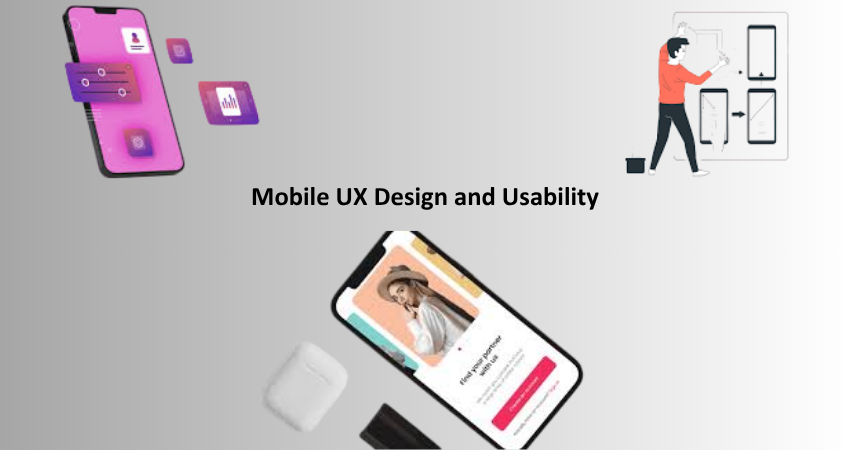
Introduction
User Experience (UX) design has become the backbone of web development today, focusing intensely on aesthetics and functionality. In an environment where users expect to arrive at relevant information instantly, through seamless navigation and intuitive interactions, UX design should be assessed for its role in a website’s success or failure. It will be a company-e-commerce, corporate, or personal blog; quality UX design will stand to improve usability, which facilitates users to find what they want easily and enjoyably. In recent times, with mounting competition among e-commerce businesses, UX is becoming pivotal for organizations trying to distinguish their offerings and to retain users.
The usability of a site is one of the central characteristics within usability as a factor in UX design-that is, it reflects how easy and effective the site can be in helping users reach their content goals. In this measure, one looks at the various parameters related to the amount of time that can be opened, ease of navigation, see-through information, fully responsive, accessible, and complete satisfaction for its use by the users. A site may be visually stunning, but when people have a hard time finding information or completing tasks on it, it is really a usability problem. This is where UX design comes in to put the interface and structure of a website into sync with the user’s actions and expectations. Such a balance between UX design and usability can greatly affect bounce rates, conversion rates, and user retention, thereby defining the overall performance and reputation of a website.
Understanding the Core Principles of UX Design
User-Centered Design Approach
The UCD approach is the cardinal truth behind effective UX design. This methodology focuses on the requirements, wants, and limitations of the end-user at every stage of the design and development process. Not like the traditional design strategies, which only regard the aesthetics and business objectives, UCD continuously entails research amongst users with a feedback collection and iteration testing. This way, the design decisions are based on real user behavior rather than assumptions. Thus, if the customers are involved early enough and continuously, designers can have the best interface feel like intuitive, lower learning curve, and a feeling of control and satisfaction with it.
Personas and user journeys are the two fundamental tools used in user-centered design .Creating a persona is a fictitious representation of a personas is an imaginary representation of the target users having the designers understand user motivation, goals, and pain points. A user journey is said to be a map of the steps moved by the user to accomplish the tasks more on a given website. The above would guide the design decisions from layout and content hierarchy to navigation structure and interactive parts. The end product would thus be a website that speaks to users so much that they do well to engage, convert, or even return. In other words, UCD is putting user expectation into structural form for the creation of the website, which itself would be a critical factor toward usability.
Information Architecture and Navigation
The value of information architecture and navigation in UX design is significant because they affect usability directly. The information architecture involves the organization, structure, and labeling of content that allows users to find what they seek without hindrance. A logical and common sense information architecture guarantees that users can navigate within the site without any confusion or unnecessary clicks. Content that is disorganized compounds a user’s experience of frustration, an abandoned session, and, paradoxically, negative brand associations. The ancillary use of card sorting, tree testing, and other workflows by a UX designer creates information architecture reflecting how users categorize information in their mind.
The navigation design serves as a support system for the users, allowing them to traverse an application efficiently concerning information architecture. Tools here are menus, breadcrumbs, filters, and search mechanisms. Well-designed navigation is consistent, accessible, and responsive to help users on their journey. UX designers try to ensure that users can flow seamlessly from one part to the next with minimal actions for task completion, always letting them know where they are and how to go back to prior sections. Good navigation reduces cognitive load and also makes users feel empowered by the whole experience and usability of the site.
Visual Design and Its Role in Usability

Layout and Visual Hierarchy
Visual design’s essence transcends beautifying a website; it aids in directing the glance of the user and enhances understanding by way of deliberate arrangement and hierarchy. UX/UI designers use principles of visual hierarchy to prioritize information so that the most significant aspects will stand out. Manipulation of size, color, contrast, space, and typography leads users systematically through the content. For example, there will be something larger and bolder compared to the rest of the information being the title, and content related to the title will be grouped together, creating a coherent visual section. This allows the user to process the information quickly and render the interface predictable and user-friendly.
A cluttered or inconsistent layout could easily distract users and make it less usable. Users find it harder to concentrate when one visual element competes for attention against another, and this erects hurdles that may cause them to miss out on some key information. UX designers would strip down, balance visual layouts to enhance reading level and decrease distraction. Grids and responsiveness shall have its principles applied to maintain consistency across devices. By putting priority on clarity and logic in visual design, the UX professional eventually gives users a good pathway through, understanding and interacting with a given website with ease, and hence improving its usability and effectiveness.
Color, Typography, and Iconography
Color, typography, and iconography are some of the significant constituents of visual design. They relate images to usability. Efficient color combinations affect branding as well as a viewer’s clear understanding of information consumed. For example, highly contrasting text and background color for easy reading makes information readability easier for users with special visual needs. It can be used also in directing the users by designers. Red means an error, green stands for success messages, while blue indicates clickable links. These reduce opportunities for confusion in interaction as well as create expectations that should be met by users.
The way typography is reading, is the way users are going to understand and perceive the content. The fonts they choose must be highly legible, easily scalable, and compatible across multiple devices. By using these attributes, UX designers define the hierarchy in their typography through size, weight, and spacing; this allows users to skim content or read more thoroughly as they feel it necessary. Iconography, on the other hand, utilizes visual shortcuts for actions and information. Roads of good design call for the use of easily recognized and understood icons, which can leverage usability by minimizing text and fast-tracking comprehension. Conversely, icons that are either vague or inconsistent can be misinterpreted. Thus, by mindfully interweaving these visual elements, UX designers facilitate interactions that are efficient, pleasurable, and accessible across the board on the website.
Interactive Design and User Engagement
Microinteractions and Feedback
A microinteraction is a subtle animation or response that gives feedback to a user interacting with the interface of a website, such as by clicking a button, filling out a form, or simply hovering over an element. The product of this little design gesture is great feedback which either confirms that an action has been perceived or such feedback guides users toward the next action. For example, a button changing its color upon being clicked tells the user that their action has been perceived. In addition, real-time validation messages help a user to correct any mistakes while filling out a form. Such interactions improve the usability of a site by creating the impression that it has a responsive, knowledgeable interface.
Microinteractions assist in giving fluidity and fun to the user experience. They reduce uncertainty for users, get tasks done more efficiently, and signal professionalism and fine detailing. The microinteractions are expressly designed to be noticed, but not to a level that would distract. If abused or improperly implemented, the animations can do the opposite by making the experience tedious or detrimental to speed. If well-balanced, microinteractions become effective means of improving usability and keeping users interested in the design.
Consistency and Predictability in Interactions
Outstanding web experiences are built on two essential dimensions: consistency and predictability. With similar design patterns throughout a website, a user leaves by astonished and disoriented; instead, they rely on familiar structures to understandively navigate and interact. The same style should be expected for buttons, behavior for links, layouts for forms, and error messages. Predictability means less mental traffic when learning in new systems; instead, they can proceed to learn and focus on the task at hand rather than shelling out all that time just figuring out how a website has been made to look and behave. UX designers do this, through component standardization and style guides or design systems, to uphold visual and functional coherency across the site. Predictability also brings about accessibility and inclusiveness for a user such as a person with cognitive disability, having flows where they are used to having interfaces react mainly as they expect instead of acting as if their user experience has changed. Effective interaction patterns result in faster learning of systems and reduced frustration because they perform in a normative way, particularly towards newer and occasional users.
Predictability allows for accessibility and participation, for example, where a user has a cognitive disability that interfaces operate, as anticipated, and does not cause sudden changes or unexpected workflows. Meaningful interaction patterns enhance learning about the system faster and reduce frustration by functioning in a typical way and especially for users who are new and use it occasionally. Moreover, predictability inspires trust: users will engage with a website they perceive as stable, transparent, and usable. Hence, by designing for consistency and predictability, UX professionals create the kind of atmosphere wherein users feel comfortable, empowered, and in control; this bolsters usability and satisfaction tremendously.
Mobile UX Design and Usability

Designing for Smaller Screens and Touch Interfaces
Mobile screen design is about bringing small screen design as an increasing subject in Ux design. Usability of mobile devices is a way of intuitive layouts, touch-friendly interfaces, and reduced design so that an application can have usability on the mobile device. The content and navigation should be modified by the UX designers to be within with a small screen size or area without losing functionality and aesthetic needs. This usually applies to characteristics associated with collapsible menus, importance to major content, and adequately sized and spaced touch targets. The use responsive design adaptation whereby the website design adjusts seamlessly to different screen sizes so that it is a consistent experience across devices.
The touch interaction poses its own unique problems like absence of hover states and the danger of accidental tapping. The UX designer needs to resolve these threats by creating clear visual cues and gesture navigation. For instance, while swiping to delete or tapping to expand should be intuitive and provide feedback. Designers also consider thumb-friendly zones, avoiding placing interactive elements at screen edges which are hard to reach. By designing for touch and mobility, the UX strengthens usability for smartphones and tablets, for which user expectations are especially high in terms of speed and convenience.
Performance and Accessibility Considerations
Performance and accessibility are the potentially most critical factors for a mobile user. Any slow-loading page or content that cannot be accessed frustrates instantaneously and eventually, abandons it. The UX designers are working together with developers on performance optimization through lightweight assets, lazy loading, and appropriate coding. The other aspects are all taking mobile interactions under various network conditions to check the reliability of the tests. A very fast and smooth experience is crucial while users are accessing and completing information on a mobile device, thereby increasing the need for more interaction with satisfied users who are returning for more.
Accessibility guarantees inclusivity of mobile experiences for all users, including the disabled. UX designers generally consider scalable text, voice command, or reader support for the different needs. The text is then structured adaptively to flow as per the mobile accessibility guidelines and provide alternatives in non-text elements. In addition, designers carry out usability testing with actual users to glean insights that could be used to enhance the mobile interfaces. Combining performance and access makes UX design suggest completely different scenarios for the users, thereby making mobile usability not only functional but also liberating and fair.
Conclusion
The very significance of UX design within the usability domain of a website seems not to be overemphasized. Every design element-from the broadest layout down to the tiniest microinteractions to mobile optimization-influences how users predicate their opinion, navigation, and interaction with a site. UX design converts lofty goals into physical experience that models the users’ needs with the organizational objectives through thoughtful, user-centered design. The more usability is increased through an effective UX design, the more functional, pleasurable, and more accessible it becomes.
It is no longer a luxury, as it was before, but a necessity to invest in UX design in the digital competition and ever-changing user expectations. Those companies that have learned the lesson of usability and genuinely embraced UX across their life cycles in terms of development garner more engagement, better conversion, and brand loyalty. Therefore, in essence, a good UX design creates digital experiences that are for everyone: casual visitors convert into loyal users, and all achieve success.